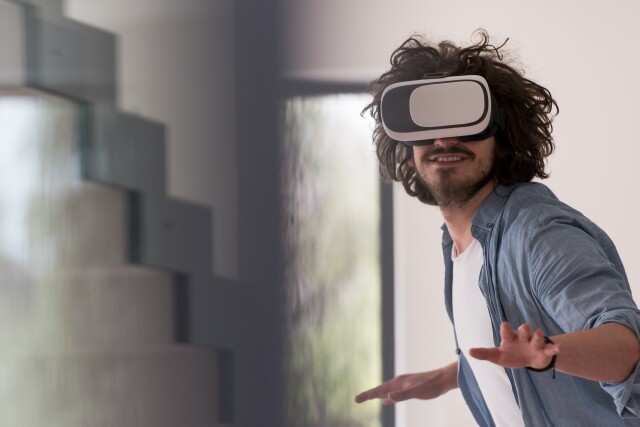Spark Foundry's Andrew Klein Connects AI, Mixed Reality and E-Mobility

Andrew Klein, Director of Content Innovation at Publicis Media's Spark Foundry, saw a lot of stuff at SXSW this year that seems designed to get any innovation executive excited: sumptuous brand activations like an Under Armour-SAP experience, AI all around and masses of scooters. For Klein (pictured below), it's all connected. The connection might seem tenuous at first, but he neatly laid it all out. "So many of these technological trends daisy chain together," he told MediaVillage in a recent interview.
First, there's artificial intelligence, the nebulous term for machines that perform tasks using human-like cognitive processes. Klein's main interest, from a professional perspective, is in the uses of AI from a consumer-facing standpoint. "That's something we think about a lot with our clients," he explained. "What does AI mean for consumers?" For Spark Foundry, it means partnering with AI Music, for example, to create audio ad units for Cox Communications that are tailored to each user's music preferences using artificial intelligence.
This AI and the underpinning principles, like such machine-learning power tech as autonomous vehicles and deepfakes, raise a number of questions about the ethics of the technology. But as we discuss those questions as a society, Klein sees opportunity right now for marketers. "If an AI can generate unique faces that don't really exist, you can use these faces instead of real models," Klein explained. That can save advertisers tens of thousands of dollars on commercial shoots.
Klein was also intrigued by machine learning's “mixed reality” applications. Virtual reality is entirely digital; augmented reality overlays digital information onto a digital display, like your phone, but “mixed reality” overlays digital information onto physical spaces, like Klein saw at Under Armour and SAP's brand activation. The core was simple: People shooting basketballs on a real court, with a real hoop. But the floor and walls had digital-powered overlays that would tell you where the best spot to shoot from was or blast you with congratulations when you made a basket. "That was a fantastic use case of immersive media," Klein said.
Because SXSW takes place in an area considerably larger than a single conference center, getting around can be a chore. Lyft rides that any other time of year would take minutes stretch into the half-hour range, and hoofing it isn't ideal if you're trying to make it from one panel to another in a very tight amount of time. Which brings us to the e-scooters.
"They were everywhere," Klein marveled. These were electric scooters from companies like Lyft -- the kind that you rent using an app on your phone for something like 15 cents per minute and when your journey is complete, simply leave it wherever is convenient. Klein was able to breeze from one event to another at speeds of 14 miles per hour. "Although," he added, "the amazing thing about the technology on these scooters was that they were geofenced -- there were certain areas where the scooter would automatically, and immediately, go from 14 miles an hour to two." These visible-only-to-e-scooter geofences were placed in front of areas that were especially congested with foot traffic as a safety measure.
While Klein did not leave his scooters in the middle of sidewalks or on Austin residents' lawns like some kind of monster he does see the problem for residents. "I saw Austinites picking the scooters up and throwing them into big piles, saying, 'Get these off my property,'” he recalled. “And then you'd have a brand ambassador coming and calling the police, saying, 'These people are destroying our property.'"
Klein even saw scooters that had had their QR activation codes -- which the scooter needs in order to be used -- blacked out with permanent marker, the work of unknown vandals.
Even with those issues, Klein couldn’t help but wax rhapsodic about the two-wheeled convenience. It's not even the convenience -- Klein, ever the marketer, sees yet another opportunity for clients. While there were no brands featured on those scooters (other than the brands that operated them), Klein thinks they were the most valuable brand real estate at SXSW, and he anticipates the scooters will feature ads soon enough. "Picture the Aflac duck on there," he mused.
The scooters and the mixed reality and just about everything else he saw reminded Klein of Burning Man, the desert festival that, in recent years, has become a destination for tech types. "Burning Man is sort of the upside-down version of South By," he said. While Burning Man eschews brands and SXSW is, at this point, entirely about brands, both are crucibles of community, connecting with people you never thought you'd come across while attempting to tackle thorny issues around technology.
Click the social buttons above or below to share this content with your friends and colleagues.
The opinions and points of view expressed in this content are exclusively the views of the author and/or subject(s) and do not necessarily represent the views of MediaVillage.com/MyersBizNet, Inc. management or associated writers.


